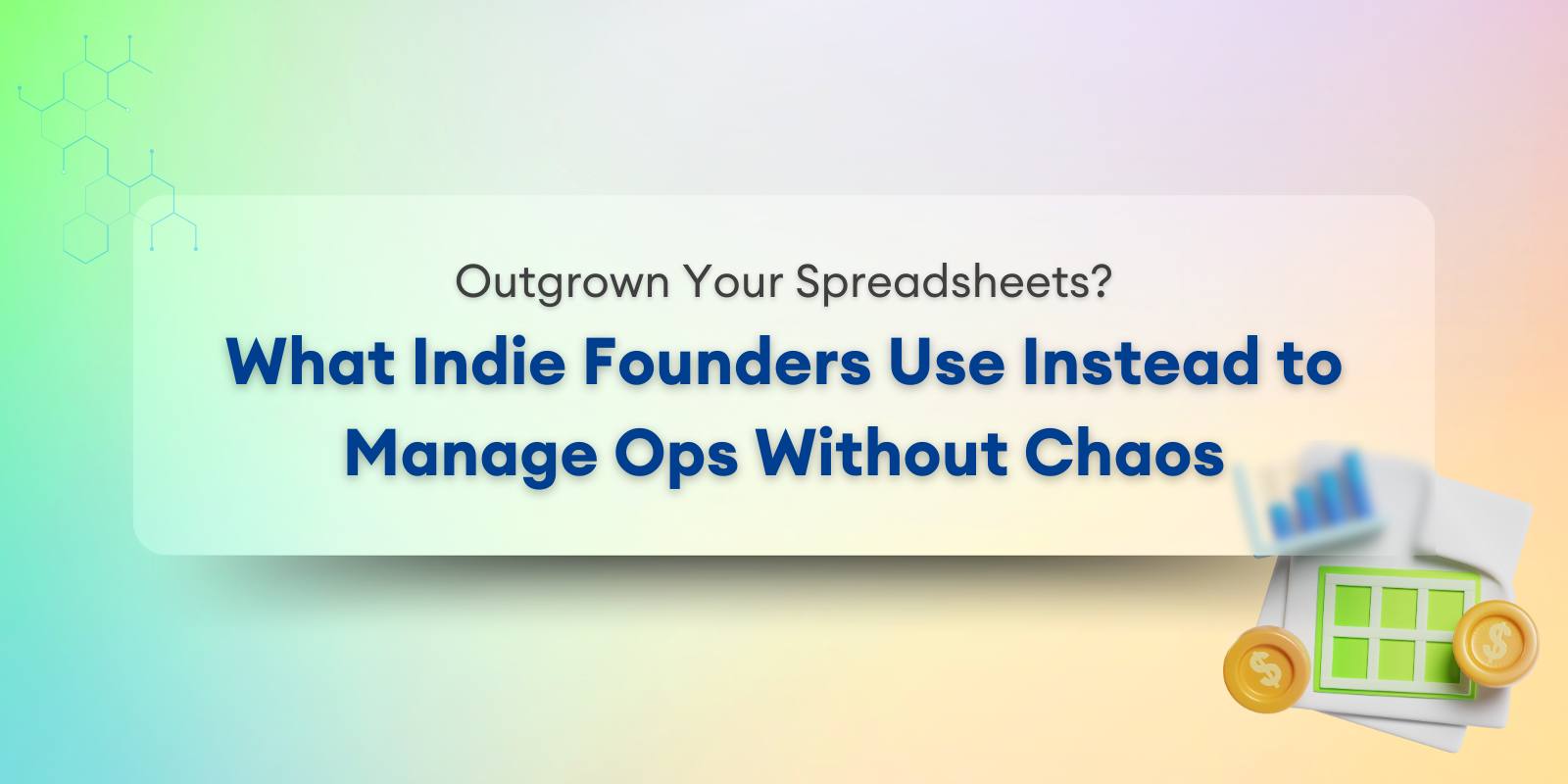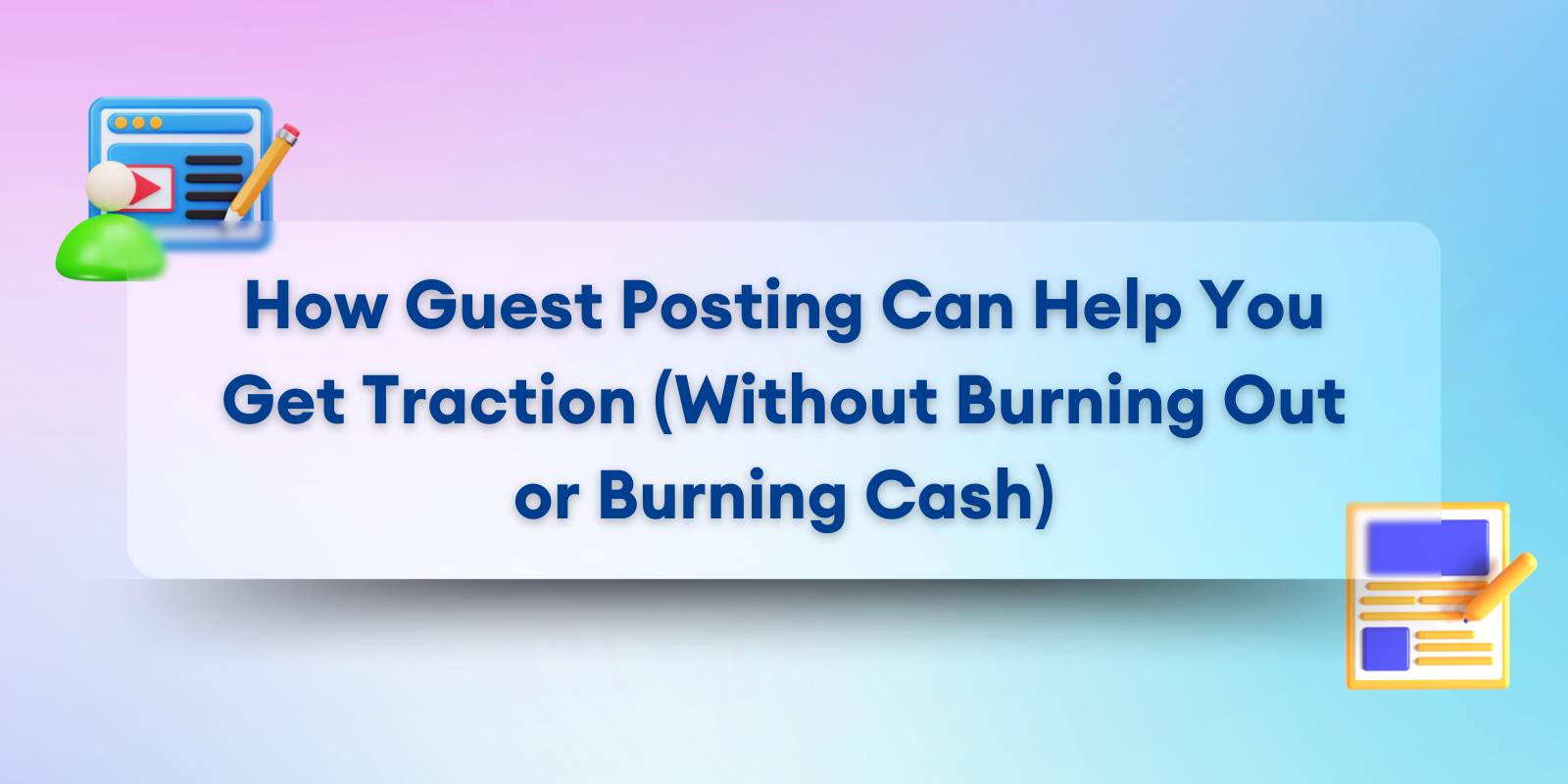
You didn’t start your business to become a spreadsheet janitor.
But somehow, here you are, flipping between fifteen tabs just to answer one simple question: “Where’s that order?”
Google Sheets used to feel like freedom. A way to “organize the chaos.”
Now it’s a graveyard of abandoned ideas, outdated launch dates, and rows that haven't been touched since Q1.
Sound familiar?
It happens quietly. One new product, one collab, one half-baked ops process at a time.
And suddenly, your beautiful, lean solo business is being run by duct tape and conditional formatting.
Here’s the good news: you’re not the problem. The system is.
This guide is for indie founders who are scaling fast, but don’t want to end up buried in their own backend.
We’re going to show you exactly when spreadsheets stop serving you, and what lightweight tools you can swap in without turning into a project manager.
Let’s clean this up.
The 3-Tabs Problem: When Sheets Start Slowing You Down
There’s a sweet spot where spreadsheets work beautifully.
Your orders fit on one tab.
You can see what’s happening at a glance.
It feels light, fast, and founder-friendly.
Then comes the 3-tab moment.
One for customer orders.
One for fulfillment.
One for vendor tracking (or marketing, or launches, or… yeah).
And nothing talks to each other.
You’re copying and pasting data between sheets.
You’re forgetting to update status columns.
You’re triple-checking formulas at midnight before a new product drop.
Sound familiar?
This is what we call spreadsheet sprawl. It’s not that the tool itself broke, it’s that your business grew past the tool’s limits.
And when that happens, the cost isn’t just mental load. It’s:
- Missed delivery windows
- Misquoted pricing
- Wrong items shipped
- Confused contractors
- Burnt-out founder (that’s you)
In some rare cases, like if your small product business has started coordinating multiple SKUs, vendors, and batch production, graduating to something like a manufacturing ERP might make sense. These are purpose-built systems that track labor, materials, and job progress in one place, often surfacing profit per job in real time.
But for most indie founders?
You don’t need “enterprise software.”
You just need to stop duct-taping your operations together.
Let’s talk about what to track, and how to do it cleanly.
What to Track (Without Turning Into an Ops Manager)
Most founders wait until things break to start organizing their backend.
By then, it’s a mess: random notes in Notion, client tasks buried in DMs, an old spreadsheet you kinda-sorta trust.
So let’s rewind.
What if you could build a simple structure, before the chaos sets in?
Here are the four ops zones every indie founder actually needs to track. No fluff. No overkill. Just clarity.
Revenue Activities
You don’t need a finance department.
You need to know what’s working, and what isn’t.
Track:
- Revenue per product or service
- Sales by channel (email, social, direct)
- Refunds, churn, one-time spikes
- Affiliate or partner income (if you have any)
You want to spot trends and outliers. That’s it.
Delivery & Fulfillment
Whether you're shipping physical goods, launching a cohort, or onboarding a 1:1 client, you need a delivery checklist that’s… actually visible.
Track:
- What was sold
- Who it’s going to
- When it’s due
- Current status (draft, shipped, live, etc.)
If something gets delayed, you should know before the customer does.
Marketing in Motion
This is where most founders fall apart, too many ideas, no system to track execution.
Track:
- Campaigns: what’s live, scheduled, or stuck
- Assets: emails, visuals, copy drafts, URLs
- Collaborators: who’s involved, what’s pending
The goal isn’t to plan every detail. It’s to know what’s moving, and what’s not.
Internal Ops
This is the boring stuff that protects your brain.
Track:
- SOPs for repeatable tasks
- Tiny legal or admin to-dos (business renewals, tax dates)
- Your working notes, priorities, and experiments
Treat this as your anti-chaos layer. It’s not about being perfect. It’s about not getting blindsided.
Airtable vs. Notion vs. SmartSuite: What to Use (and When)
At some point, every founder hits the “this spreadsheet is a dumpster fire” moment.
You start looking for something better, but land in the middle of a 50-tab showdown between 73 different no-code tools. All promising to be “your team’s second brain.”
Let’s skip the feature lists and get straight to the real question:
Which one works for your brain?
If You’re Visual + Ops-Driven → Airtable
Airtable feels like Google Sheets grew up and started lifting weights.
You can sort, filter, and group anything, orders, campaigns, products, you name it, without formulas.
Great for:
- Fulfillment tracking
- Inventory + vendor management
- Project templates you’ll reuse (launches, collabs)
Bonus: You can view your data as a kanban board, calendar, or gallery. Feels like magic when you’re managing a lot of moving parts.
If You’re Idea-First or Content-Led → Notion
Notion is like a blank notebook that grows into a dashboard, if you feed it properly.
It’s great for founders who think in long-form notes, content outlines, and systems you want to see as you build.
Use it for:
- Editorial calendars
- Sales copy + page links
- Product launch playbooks
- Team wikis (if/when you hire)
Just be warned: Notion rewards structure. If you don’t build it intentionally, it can become a junk drawer.
If You’re Scaling Fast + Need Guardrails → SmartSuite
SmartSuite sits in the middle, less visual than Airtable, more structured than Notion.
Think of it as the tool that grows with you without making you feel like you’re managing a team of 12.
It’s built for:
- Solo operators starting to hire
- Consultants juggling client work
- Early-stage founders wanting just enough automation
Its default views and templates keep you focused without overwhelming you with setup decisions.
All three tools beat spreadsheets on one critical metric: operational clarity.
Pick the one that feels easiest to live in daily. That's the real win.
Build Once. Automate Forever.
Most solopreneurs assume automation means setting up some 18-step Zapier nightmare…
or that it’s only “worth it” once you’ve hit six figures.
That’s backward.
The best automations don’t save you hours a day.
They save you tiny, annoying minutes, over and over again.
Here’s how to set up just enough backend flow to protect your time (without hiring an ops manager).
Use Zapier or Make to Auto-Sync the Stuff You Always Forget
You’re already doing the work. You just don’t want to keep pasting data into 5 different tools.
Some beginner-friendly automations:
- Shopify → Airtable: Auto-log every new order to a fulfillment tracker.
- Typeform → Notion: Send new leads straight to your “contact me later” board.
- Gmail → SmartSuite: Flag client emails that mention the word “invoice”.
You’ll spend 20 minutes setting these up. Then never touch them again.
Use Bardeen or Tana to Handle the Weird, Manual Stuff
Bardeen is like an AI assistant that lives in your browser. Tana’s great if you love interlinked tasks and context-aware notes.
Here’s where they shine:
- Bardeen: Pull customer data from web dashboards into your task manager.
- Tana: Auto-categorize tasks by urgency or link them to specific launches.
This isn’t about showing off your stack.
It’s about making fewer decisions, and getting back to the work that matters.
Set it once. Let it run.
The future is for founders who don’t spend their Tuesdays doing admin.
How to Know You’ve Built “Enough” Ops (For Now)
It’s easy to look at other businesses and think you need a full-blown system, a dashboard, a Notion wiki, an ops assistant, and a weekly team sync… even when it’s just you.
That’s burnout bait.
Let’s zoom out and define what “enough” really looks like for a solo or small-team founder who just wants to run their business, not their backend.
Signs You’re Set
Your system might be simple, but if it’s keeping you consistent, it’s doing its job.
✅ You’re not waking up thinking “Did I forget something?”
✅ Customers aren’t emailing you to ask what’s going on
✅ You know your numbers (at least the important ones)
✅ You’re shipping, on time, without panic
✅ You spend less than two hours a week keeping it all updated
That’s functional. That’s enough.
Red Flags You’re Overbuilding
Solo ops should feel like breathing, not like managing a product team.
🚩 You’ve got more dashboards than products
🚩 You’re tracking things “just in case” instead of by need
🚩 Your system breaks when you’re offline for a day
🚩 You’re rebuilding your backend every month because you saw a shiny new tool
🚩 You can’t find stuff. That’s it. That’s the flag.
More tooling doesn’t mean more control.
Useful beats fancy.
Every single time.
Spreadsheets Got You Here. But They Won’t Get You There.
Nobody’s saying Google Sheets is evil.
It probably helped you map your first product, track your first sale, maybe even build your first waitlist.
But at some point, what used to feel lightweight starts feeling like weight.
You’re not failing, your ops system is just overdue for a glow-up.
And that doesn’t mean jumping into enterprise software.
It means picking smarter tools, cleaner workflows, and only building what helps you ship faster, respond quicker, and breathe easier.
So here’s your next move:
- Clean up one spreadsheet today.
- Map your four ops zones.
- Pick one tool, just one, to test for the next week.
Don’t aim for perfect.
Aim for calm, consistent, and clear.
That’s enough.
And for now?
Enough is everything.




